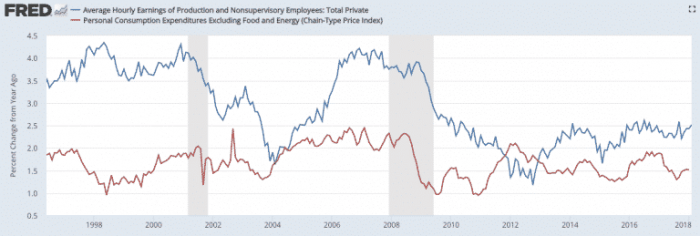Chart of the day: Average hourly earnings, 1998-2018
Let’s continue the discussion about the jobs report I started yesterday. Last month, I mentioned that the increase in average hourly earnings for non-supervisory workers wasn’t signalling a breakout. In fact, the inflation-adjusted numbers are still much lower than in the prior two business cycles. Well, the data this month don’t show anything different. Take a look.
Source: St. Louis Fed
I have used the Core PCE Price Index as my reference because that’s what the Fed uses to track inflation. Below is a chart using the CPI, which is more indicative of the inflation consumers actually see.
Source: St. Louis Fed
Wages look even less robust with that time series. And that’s true for all three business cycles depicted over the past twenty-odd years. In this cycle, the good thing is that wages are higher than core inflation. The bad thing is that the inflation as measured by the CPI makes for no real growth in wages. Moreover, there is no indication that wages are moving sustainably higher. And therefore, there is no indication that wages have any inflationary consequences.


Comments are closed.